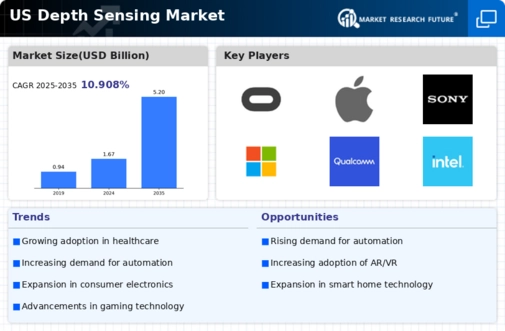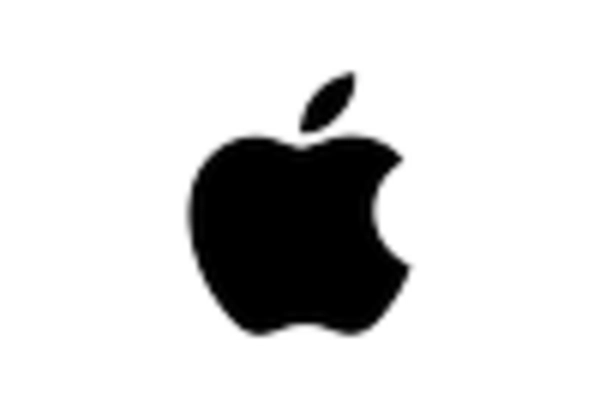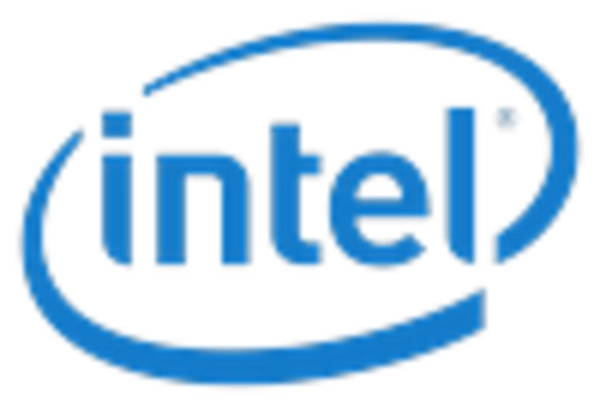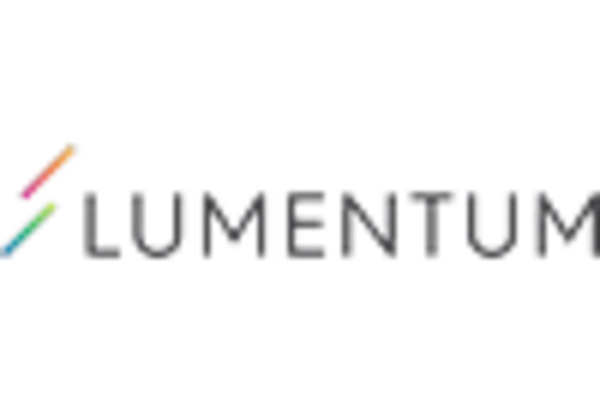Expansion of Robotics and Automation
The depth sensing market is experiencing growth due to the expansion of robotics and automation across various industries. As companies seek to improve efficiency and reduce operational costs, the integration of depth sensing technologies in robotic systems is becoming essential. In 2025, the robotics market is expected to exceed $200 billion, with depth sensing enabling robots to navigate complex environments and perform tasks with precision. This trend is particularly relevant in manufacturing, logistics, and healthcare, where automation is transforming traditional processes. The depth sensing market is thus positioned for significant growth, as the demand for advanced robotic solutions continues to rise.
Rising Demand for Augmented Reality Solutions
The depth sensing market is significantly influenced by the rising demand for augmented reality (AR) solutions across various sectors. As businesses seek to enhance user experiences, the integration of depth sensing technologies in AR applications is becoming increasingly prevalent. In 2025, the AR market is expected to surpass $100 billion, with depth sensing playing a crucial role in creating immersive environments. This trend is particularly evident in retail, gaming, and education, where depth sensing enhances interactivity and realism. Consequently, the depth sensing market is poised for substantial growth, as companies leverage these technologies to meet consumer expectations and improve engagement.
Growing Focus on Safety and Security Solutions
The depth sensing market is increasingly driven by a growing focus on safety and security solutions in various sectors. As concerns about safety escalate, industries are adopting depth sensing technologies to enhance surveillance and monitoring systems. In 2025, the security market is projected to reach $50 billion, with depth sensing playing a pivotal role in improving threat detection and response capabilities. This trend is particularly evident in urban environments, where smart surveillance systems utilize depth sensing to provide accurate and real-time data. As the demand for enhanced security measures continues to rise, the depth sensing market is likely to experience substantial growth, reflecting the industry's commitment to safety.
Increased Investment in Smart Home Technologies
The depth sensing market is benefiting from increased investment in smart home technologies, which are gaining traction among consumers. As households adopt smart devices for security, automation, and convenience, depth sensing technologies are integral to enhancing functionality. In 2025, the smart home market is projected to reach $150 billion, with depth sensing applications in security cameras and smart appliances driving demand. This trend indicates a shift towards more sophisticated home environments, where depth sensing capabilities improve user interaction and safety. As manufacturers continue to innovate, the depth sensing market is likely to expand, reflecting the growing consumer preference for smart home solutions.
Technological Advancements in Sensing Technologies
The depth sensing market is experiencing a surge due to rapid technological advancements in sensing technologies. Innovations such as LiDAR, structured light, and time-of-flight sensors are enhancing the accuracy and efficiency of depth sensing applications. In 2025, the market is projected to reach a valuation of approximately $3 billion, driven by the increasing demand for high-resolution imaging in various sectors. These advancements are particularly influential in industries like automotive and robotics, where precise depth perception is critical for safety and functionality. As companies invest in research and development, the depth sensing market is likely to witness further growth, indicating a robust trajectory for the industry.
















Leave a Comment